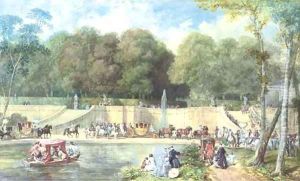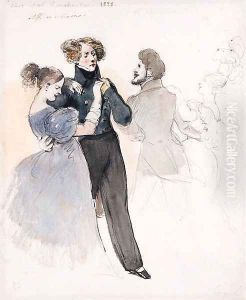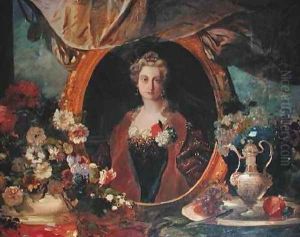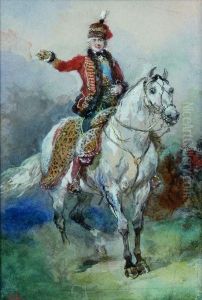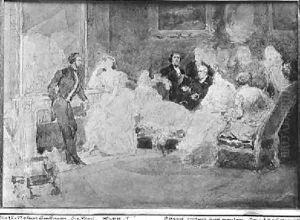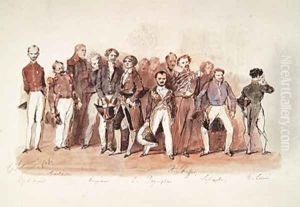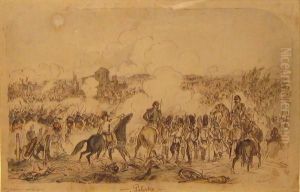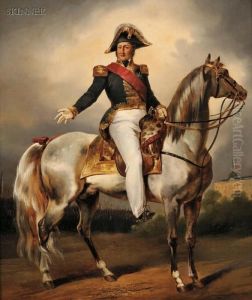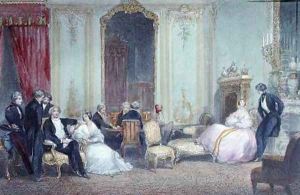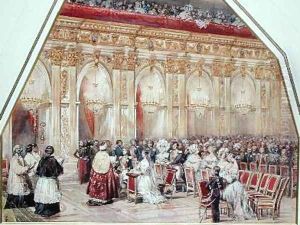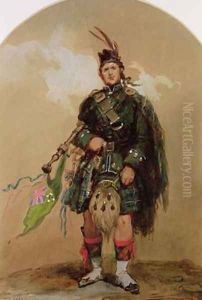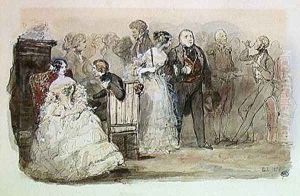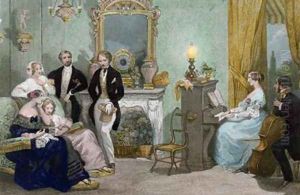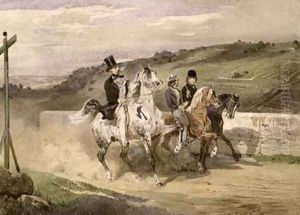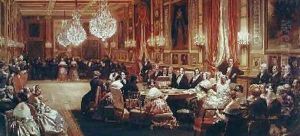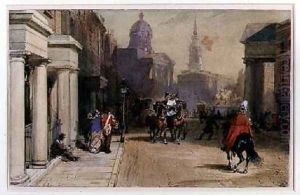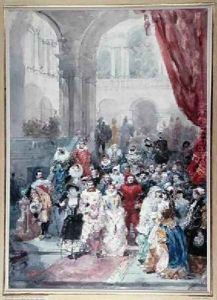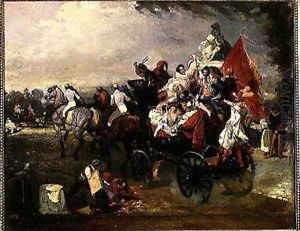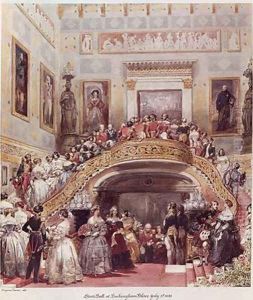Eugene Louis Lami Paintings
Eugène Louis Lami was a French painter and lithographer who is best known for his watercolors and drawings capturing the elegance of Parisian life and the pomp of the French court. Born on January 12, 1800, in Paris, Lami began his artistic training under the tutelage of Antoine-Jean Gros, who was a prominent painter of the Napoleonic era. Lami's early work was influenced by Gros's style, particularly in the use of dynamic composition and a vivid color palette.
After his initial training, Lami went on to study at the École des Beaux-Arts in Paris. His early career was marked by his involvement in the Romantic movement, alongside artists such as Eugène Delacroix and Théodore Géricault. Lami's early works predominantly featured military subjects and historical scenes, which were popular during the post-Napoleonic period in France.
Lami gained recognition for his participation in the Salon, the official art exhibition of the Académie des Beaux-Arts in Paris. He exhibited regularly from 1824 onward, receiving critical acclaim for his work. In the 1830s, Lami began to shift his focus from military and historical subjects to scenes of contemporary Parisian life. He became well-known for his depictions of the fashionable society of his time, often portraying balls, receptions, and horse races.
In addition to his watercolors and drawings, Lami also worked as a lithographer and an illustrator, contributing to various publications of the era. His illustrations for works such as Lord Byron's 'Childe Harold's Pilgrimage' helped to further cement his reputation.
One of Lami's most significant contributions to art was his role as a chronicler of the July Monarchy and the Second French Empire. He was commissioned to create a series of watercolors depicting the ceremonies and events of the court of Louis-Philippe I, and later, the court of Napoleon III. These works provide a valuable historical record of the period, capturing the opulence and grandeur of French high society.
Eugène Louis Lami's influence extended beyond France, as he spent a considerable amount of time in England, where he was well received by the aristocracy and even commissioned to paint Queen Victoria's coronation. His time in England led to the production of numerous works depicting English society and events.
Lami's artistic style is characterized by his skillful handling of light and his ability to capture the movement and atmosphere of the scenes he painted. His work is noted for its elegance and charm, embodying the spirit of the French bourgeoisie and aristocracy during the 19th century.
Eugène Louis Lami continued to paint and exhibit his work throughout his life. He passed away on December 19, 1890, in Paris, leaving behind a legacy as one of the foremost painters of French society and court life in the 19th century. His works are held in many major museums around the world and continue to be studied and admired for their historical significance and artistic beauty.





